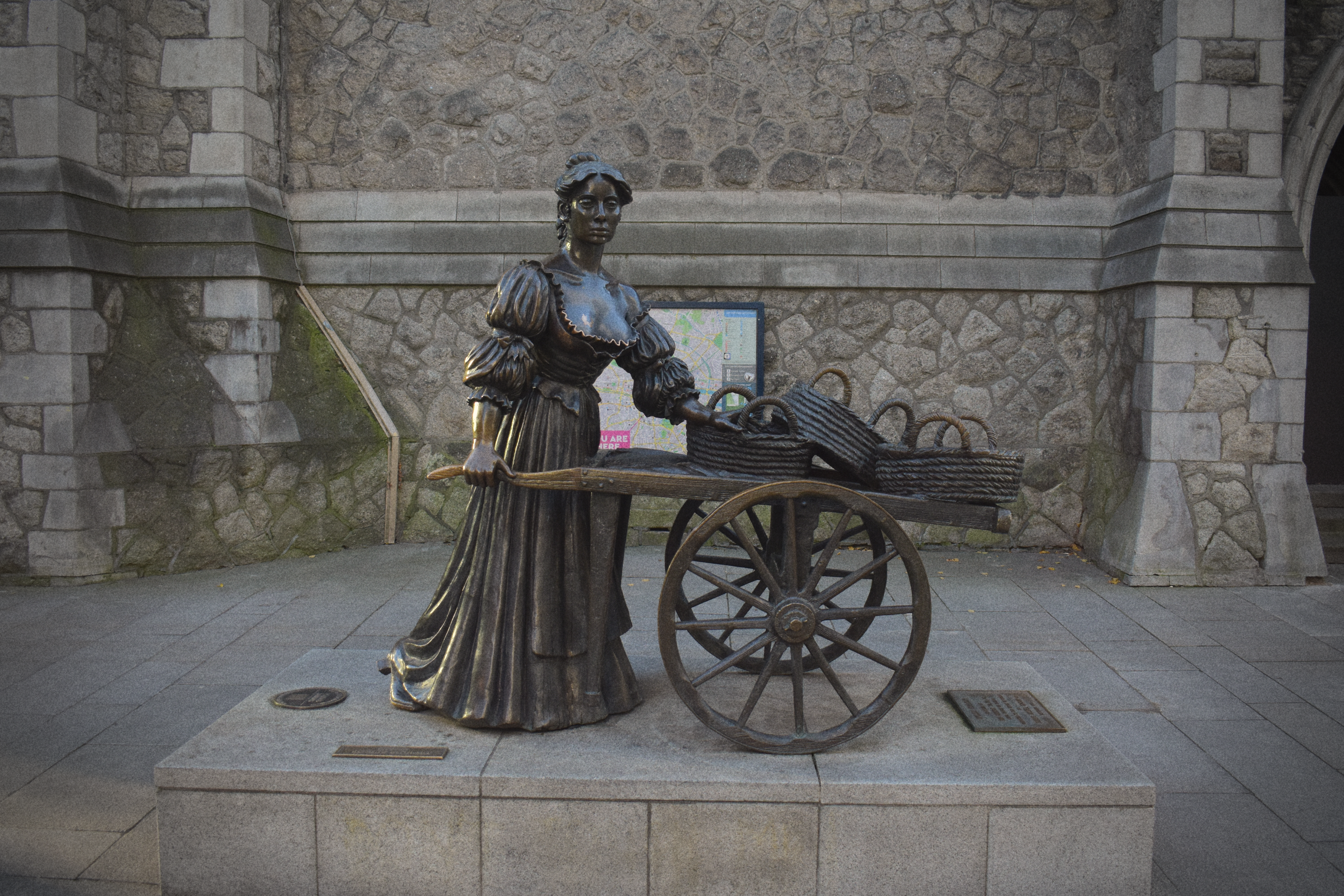The Molly Malone statue erected by Irish sculptor Jeanne Rynhart in 1988 on Suffolk Street has been subjected to substantial sexual objectification throughout its history. Created as a celebration of the first millennium of the city of Dublin, the statue portrays an image of the 1600s fishmonger who was said in folk tale to have passed away due to a fever at a young age.
While there are different variations of the story around Molly Malone, this is the most commonly passed version. In alignment with this version of her story, it is said in various articles including the Irish Times, that if you touch Molly Malone’s breasts she will bring you good luck for “seven years, seven days, seven nights, seven hours and seven minutes”. There are contrasting periods which are associated with the story, for how long one gets regarding luck.
This dull tale of molestation of her breasts explains the reason why they resemble a gold like colour, rather than the weathered shades of bronze seen on the rest of her body, due to the oil secretions on peoples hands from being overly fondled day to day.
There is currently a widespread campaign initiative to stop the mistreatment of the statue, and empower women alongside it. Along with raise awareness about safety for women in Dublin, this campaign aims to humanise the woman behind the statue, reclaiming her dignity, and dissuade future incidents of people handling her breasts.
There have also been several occasions of Molly Malone’s breasts painted over in order to match the rest of her body’s colour, with green paint reading out messages such as, “Please don’t, TY.”. I extremely admire the work they are doing to remove the narrative that this is acceptable now or has ever been acceptable.
The acts against the statue are genuinely degrading. I find it both awkward and disturbing when I walk past the statue on my way to college to see both adults themselves and adults lifting a young child up to touch the breasts themselves. Through a sociological lens, and the theory of socialisation, if these behaviours are endorsed by parents at a younger age there is a higher likelihood that these norms will persist through future generations.
Furthermore, while looking around to find out more information about other statues of women in Ireland, it became extremely apparent that there is a significant lack of female representation in this medium of artistry. The scarcity of women throughout the art form of sculpting within Ireland is problematic, and fails to show the diverse history of the country.
It has been said at different points that in order to stop people from objectifying the statue and to inevitably prevent people from incessant groping, the statue should be moved or removed. This is a terrible idea for a few reasons. One, it removes a strong part of the history of Dublin and, when not being reminded of its objectification, is a lovely sculpture to walk past on the way to college. Two, removing the statue makes it out that the problem is actually the statue and what has been referred to as the ‘provocative styling,’ rather than the constant pathological need and queue for tourists and other visitors to feel as though they deserve the right to touch her breasts.
A good method of working with the issue at hand to ensure it does not go much further. In order to do this we need to educate the public on varying levels of inappropriateness when it comes to touching Molly Malone’s breasts. The education in this case has different levels, first, it would be important that any and all websites associated with tourism remove the idea of good luck associated with her breasts, an antiquated notion. Next, working off of the tourism industry, I think it is necessary for tour guides to stop mentioning the associated myth with her breasts. Although prevention may not be entirely possible in the near future, taking the necessary steps to work towards the desexualisation of the fishmonger is needed. Finally, we need to have a level of accountability amongst people travelling to Dublin and people living in Dublin. The concept of speak up if you see it happening is what should be implemented as the final stage here. Rather than standing idly by while people fondle the statues breasts, mention it is no longer accepted and even the idea of good luck in nothing but a false narrative made by people to justify touching the statues breasts.
Overall, I think with correct education and attitudes the foul behaviour towards the Molly Malone statue could come very close to an end. It will just take a lot of necessary work, but it can be done.






